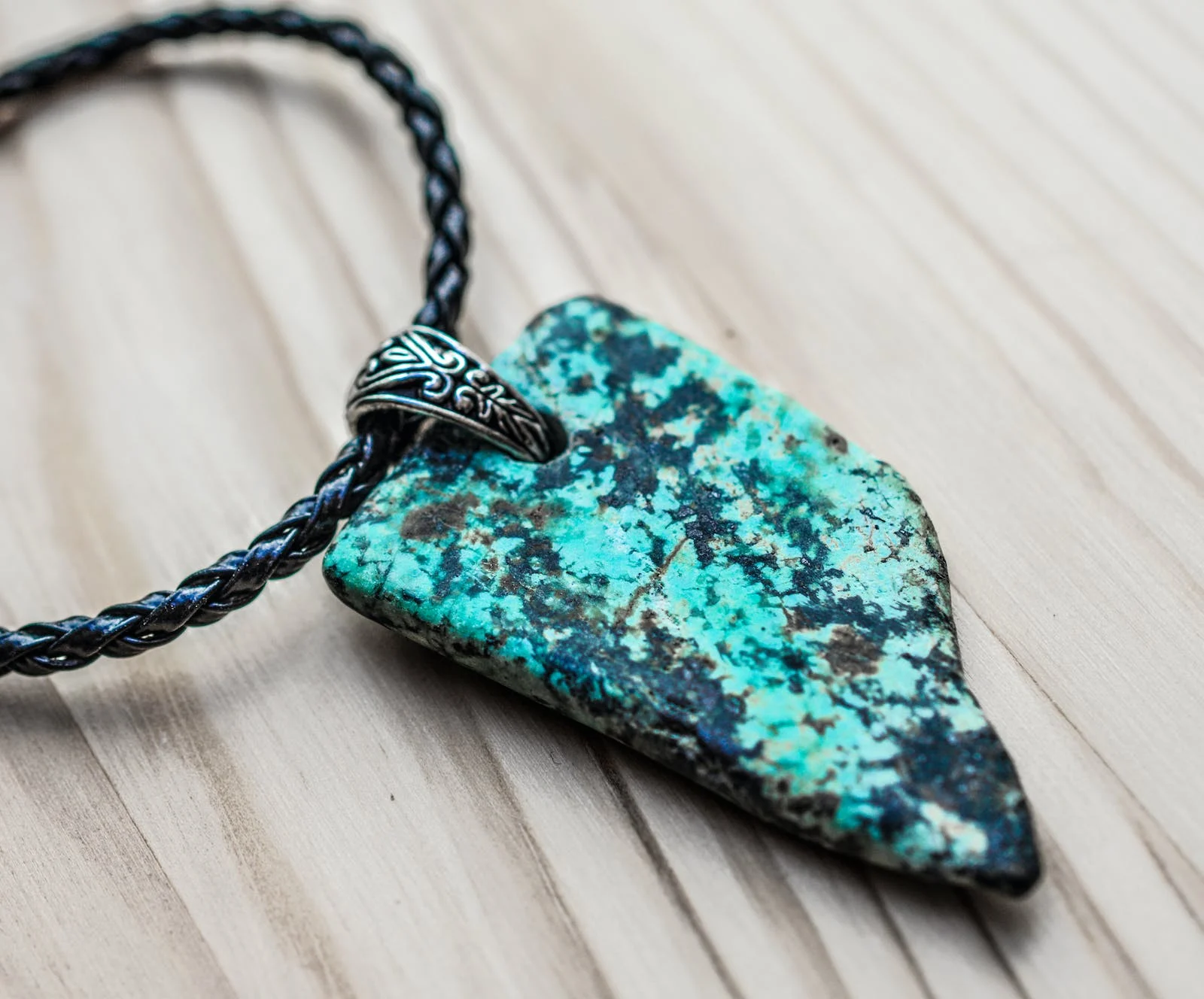
Turquoise, with its enchanting blue and green hues, has been cherished for centuries as a gemstone of beauty and spiritual significance. Yet, in the world of jewelry, not all that glitters is truly turquoise. Discerning whether your turquoise stone is genuine or not is a valuable skill for any jewelry enthusiast. It’s also good to know if the stone on those expensive earrings are faux or real. Here are some tips to help you separate the authentic from the imitations. Now I do want to mention that synthetic turquoise stones are not the devil. At Chree Of Life we actually like to carry faux stone jewelry because they have certain interesting qualities like being more lightweight and high resistance to chipping. So now that that’s clear, let’s dive in!
1. The Color Test: Genuine turquoise exhibits a range of blues and greens, often with subtle variations in shade. Be cautious of stones that are uniformly bright blue or green, as these can be signs of dyed or fake turquoise. Look for natural color variation and veins or matrix patterns within the stone.

2. Porous Texture: Turquoise is naturally porous due to its formation process. Real turquoise should have a slightly porous texture, even if it’s been polished to a smooth finish. If the stone feels perfectly smooth and glass-like, it may be an imitation.
3. Matrix Patterns: Turquoise is often found within host rock formations, creating striking matrix patterns. These patterns appear as dark lines or flecks within the stone. Genuine turquoise will typically display these matrix patterns, while fake turquoise may lack this characteristic. Basically, it doesn’t have a perfect pattern. People who don’t like the uniformity of this stone often tend to use synthetic stones that can be made identical especially for earrings.
4. Temperature Test: A quick and simple test involves touching the stone to your skin. Genuine turquoise is known to be cool to the touch, even in warm conditions. Imitations may not exhibit this natural coolness.

5. Hardness Test: Turquoise ranks relatively low on the Mohs scale of mineral hardness, typically between 5 and 6. This means it can be scratched by harder substances. If you can scratch the stone with a common household item like a steel nail, it’s likely not genuine.
6. Professional Appraisal: When in doubt, seek the expertise of a professional jeweler or gemologist. They have the knowledge and tools to accurately assess the authenticity of your turquoise stone.
7. Trustworthy Sources: Purchase turquoise jewelry from reputable sources and dealers. Be wary of deals that seem too good to be true, as counterfeit turquoise is prevalent in the market.
8. Synthetic vs. Natural: Turquoise can be synthesized in laboratories. While synthetic turquoise can be visually convincing, it may lack the metaphysical properties attributed to natural turquoise. If you value the spiritual aspects of the stone, inquire about its origin.

In the world of jewelry, authenticity is treasured as much as the beauty of the gemstone itself. Whether you wear turquoise for its aesthetic appeal or its spiritual significance, knowing how to distinguish real from fake ensures that your turquoise jewelry collection is as genuine as your appreciation for its timeless allure.
